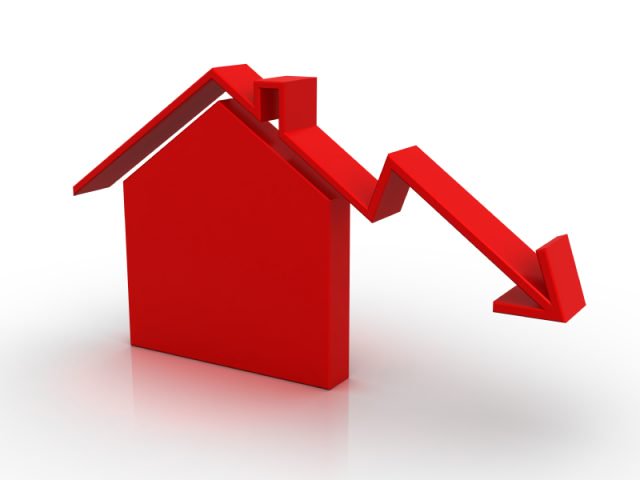The amount of loan approvals for house purchases was 68,076 in April, up from the average of 60,679 for the previous six months, revealed data from the Bank of England (BoE).
The number of approvals for remortgaging also rose, to 35,930, compared to the average of 32,308 over the last six months. For other purposes, approved loans increased to 10,623 in April, from 9,404 in the past six months.
The BoE’s report also revealed that the lending secured on dwellings grew by £1.7 billion in April, compared to the average monthly rise of £1.8 billion for the six months previously. Gross lending secured on dwellings was £17.1 billion and repayments were £15 billion.
Head of Lending at the Mortgage Advice Bureau (MAB), Brian Murphy, says: “One year after the Mortgage Market Review [MMR], today’s BoE data suggests there is much greater confidence in the mortgage market, with all types of mortgage approvals during April considerably above the average for the previous six months. Total approvals are also up 9% compared to last April, suggesting the market is adjusting back to normal now that the MMR has bedded in.

Mortgage Approvals Increase by 10% in April
“Remortgage approvals have risen at twice the rate of house purchase approvals over the past year, despite tougher affordability checks which some feared would imprison consumers in their existing deals. Falling mortgage rates have boosted demand in the remortgage sector and there are significant savings to be had for borrowers moving away from their lender’s Standard Variable Rate [SVR].
“With the election clearly having little impact on mortgage activity, the outlook for the rest of 2015 remains positive. Lenders have a healthy appetite for business and affordability conditions are being helped by the low rate environment. However, today’s rock-bottom prices can’t last forever and it is likely we’ll see greater levels of mortgage activity as borrowers seek to lock into a preferable rate while they still can.”1
Executive Director of the Intermediary Mortgage Lenders Association (IMLA), Peter Williams, comments: “Today’s BoE data shows the mortgage market finally hit the accelerator in April with the highest number of loans approved since February 2014. A 10% monthly jump in mortgage approvals is the biggest for over two years and an encouraging sign for consumers that there is plenty of life left in the mortgage market.
“Lenders have been forced to batten down the hatches over the last year to adapt to new regulations.”
Williams continues: “With the Mortgage Credit Directive [MCD] on the horizon, we are still caught in the eye of the regulatory storm, so it is reassuring to see that more people are being approved for loans than at any point since the MMR rules took effect. In particular, the rush of remortgaging proves that existing borrowers are still able to switch loan under the new affordability regime.
“Lenders are working hard behind the scenes to prepare the ground for the MCD and ensure the transition is as smooth as can be hoped for in practise, so there is every prospect for modest but sustained growth in the second half of this year.”1
Peter Rollings, CEO of Marsh & Parsons, notes: “The mortgage market has pulled through the winter stupor and jumped into action with an impressive upwards leap in April. Lending is starting to stretch out its limbs, as banks and borrowers alike are finally starting to fully understand last year’s MMR changes and navigate them effectively.
“In addition, the election affect can be overstated. Households who had been steadily saving for a deposit and lining up to buy weren’t going to suddenly park their aspirations while politicians debated theirs. Despite the question mark hanging over the property market at the time, the biggest unknowns were for the million pound levels of the market, and for many buyers, low mortgage rates and reduced Stamp Duty made it worth their while to keep moving.
“Now that the new Government has nailed its colours to the mast and made commitments to bolster house building, demand will be further galvanised at all rungs of the ladder and we’ve already seen a significant upswing in buyer registrations in May. Lending is now streaks ahead of a year ago, and with buyer confidence also leading the pack, the only way looks to be up.”1
Sales and Marketing Director at Phoebus Software, Richard Pike, concludes: “After a few months of a fairly stagnant market, the figures announced this morning by the BoE, showing a 10% increase in month-on-month approvals, are encouraging. Many predicted the lull before the election, but it appears as though there were other factors that encouraged people to move or get onto the property ladder even before election uncertainty was removed.
“With all things considered: Stamp Duty, Help to Buy, low interest rates, higher loan-to-values and lenders once again willing to lend, the market is ripe for growth. If further predictions for the year are to be believed then we are now in for a more buoyant period, which seems most likely.”1
1 http://www.propertyreporter.co.uk/hero/april-sees-10-rise-in-mortgage-approvals.html









